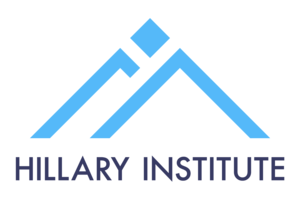From Past To Future: AI Brings New Light To Solar Observations

As solar telescopes get more sophisticated, they offer increasingly detailed views of our closest star. But with each new generation of instruments, we face the growing challenge of differences in observations. Older datasets, which sometimes span decades, can’t easily be compared with the most recent imagery. The ability to study long-term solar changes or rare events is limited by inconsistencies in resolution, calibration, and data quality.
Scientists from the University of Graz, Austria, in collaboration with colleagues from the Skolkovo Institute of Science and Technology (Skoltech), Russia, and the High Altitude Observatory of the U.S. National Center for Atmospheric Research developed a new deep learning framework (Instrument-to-Instrument translation; ITI) that helps bridge the gap between old and new observations. The research results were published in the journal Nature Communications.
“Using a type of artificial intelligence called generative adversarial networks (GANs), we’ve developed a method that can translate solar observations from one instrument to another — even if those instruments never operated at the same time,” says the lead author of the study, Robert Jarolim, a NASA postdoctoral fellow at the High Altitude Observatory in Colorado (U.S.). This technique enables the AI system to learn the characteristics of the most recent observing capabilities and transfer this information to legacy observations.
Advertisement - scroll to continue readingThe model works by training one neural network to simulate degraded images from high-quality ones, and a second network to reverse the synthetic degradation. Specifically, the method uses real-world solar data, capturing the complexity of the instrumental differences. The second network can then be applied to real low-quality observations to translate them to the quality and resolution of the high-quality reference data. This approach can transform noisy, low-resolution images into clearer ones, which are comparable to observations obtained from recent solar missions, while also preserving the physical features in the images.
This framework was applied to a range of solar datasets: combining 24 years of space-based observations, enhancing the resolution of full-disk solar imagery, reducing atmospheric noise in ground-based solar observations, and even estimating magnetic fields on the far side of the Sun using only data from extreme ultraviolet observations.
“AI can’t replace observations, but it can help us get the most out of the data that we’ve already collected,” says Jarolim. “That’s the real power of this approach.” By improving legacy solar data with information from recent observing capabilities, the full potential of the combined datasets can be used. This creates a more consistent picture of the long-term evolution of our dynamic star.
“This project demonstrates how modern computing can breathe new life into historical data,” adds Skoltech Associate Professor Tatiana Podladchikova, a co-author of the paper. “Our work goes beyond enhancing old images — it’s about creating a universal language to study the Sun’s evolution across time. Thanks to Skoltech’s high-performance computing resources, we’ve trained AI models that uncover hidden connections in decades’ worth of solar data, revealing patterns across multiple solar cycles. Ultimately, we’re building a future where every observation, past or future, can speak the same scientific language.”
*****
Skoltech is a private international university in Russia, cultivating a new generation of leaders in technology, science, and business. As a factory of technologies, it conducts research in breakthrough fields and promotes technological innovation to solve critical problems that face Russia and the world. Skoltech focuses on six priority areas: life sciences, health, and agro; telecommunications, photonics, and quantum technologies; artificial intelligence; advanced materials and engineering; energy efficiency and the energy transition; and advanced studies. Established in 2011 in collaboration with the Massachusetts Institute of Technology (MIT), Skoltech was listed among the world’s top 100 young universities by the Nature Index in its both editions (2019, 2021). On Research.com, the Institute ranks as Russian university No. 2 overall and No. 1 for genetics and materials science. In the recent SCImago Institutions Rankings, Skoltech placed first nationwide for computer science.


 New Zealand Airports Association: Airports Welcome Tourism Marketing Turbocharge
New Zealand Airports Association: Airports Welcome Tourism Marketing Turbocharge Ipsos: New Zealanders Are Still Finding It Tough Financially; Little Reprieve Expected In The Next 12 Months
Ipsos: New Zealanders Are Still Finding It Tough Financially; Little Reprieve Expected In The Next 12 Months NZ Telecommunications Forum - TCF: Telecommunications Forum Warns Retailers About 3G Shutdown
NZ Telecommunications Forum - TCF: Telecommunications Forum Warns Retailers About 3G Shutdown PSA: Worker Involvement Critical In Developing AI For The Good Of Aotearoa
PSA: Worker Involvement Critical In Developing AI For The Good Of Aotearoa MBIE: Easter Trading Laws - Your Rights And Responsibilities
MBIE: Easter Trading Laws - Your Rights And Responsibilities The Conversation: As More Communities Have To Consider Relocation, We Explore What Happens To The Land After People Leave
The Conversation: As More Communities Have To Consider Relocation, We Explore What Happens To The Land After People Leave



